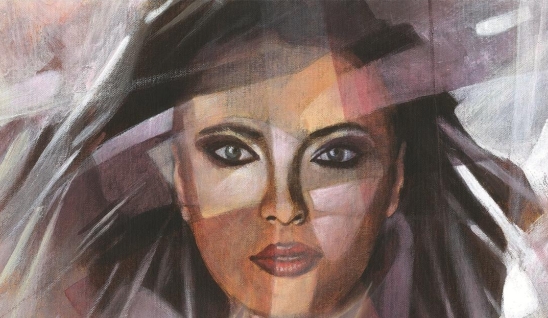Norma - Director's Notes
26 October 2011
Although Norma takes place in the times of the Roman conquest of Britain, the drama is perennial: two women who fall in love with the same man. Better still, a man who seduces and abandons his lover and his two sons, to woo her friend. Pollione, the Roman proconsul, whose constancy in inconstancy stands rooted, has dubious tastes: he prefers priestesses consecrated to the cult of Irminsul, certainly not the ideal fare the British could offer! The main challenge of this landmark opera is how to reconcile the seething drama fraught with mounting tensions between the top trio: He-She-the Other, with the sublime bel canto style whose liquid beauty defies description. Norma is justifiably considered a cornerstone of the Italian bel canto packed with arias, cabalette, duets and concertati up to the fantastic and glorious finale which had Wagner on fire, and still has the power to stir up great emotions whenever and wherever it is performed.
Norma provides the ambience so much in vogue in the 60’s magnificent films, sporting a glistening array of Roman legions, paragons of male dominance and pride, straddling the globe as of it were an Arab stallion! Nothing could be farther removed from reality: the Romans were in fact quite low in stature and corpulent. How could one reconcile the supposedly savage, barbarian and fiery Norma with the statuesque Sophia Loren?
The first hurdle to overcome is how to present a creditable milieu to a contemporary audience taking into account the decidedly mysterious and eerie forest in which the drama evolves. The sacred oak tree of Irminsul, a kind of totem pole, which casts an evil spell on one and all, which apart from being the symbol of the deity invoked from all sides, also serves as Norma’s abode, and dominates the unfolding drama. Its roots entwine the ruins of a Roman Temple: a premonition of the end of hated Roman rule prophesized by the Priestess, “Io ne’ volumi arcani leggo del cielo, in pagine di morte della superba Roma e’ scritto il nome. Ella un giorno morra’, ma non per voi. Morra’ per vizi suoi, qual consunta morra’. L’ora aspettate, l’ora fatal che compia il gran decreto”. (Rome will perish, not by your swords, but by her vices. Just wait for the fatal hour).
The fateful element in the opera is also underlined in Pollione’s dream, which he faithfully recounts to his confidante Flavio. This dream is in a way anticipated in the superb Overture: the fateful encounter of Pollione with Adalgisa which can be likened to a storm which savages an idyllic countryside, the portentous entrance of Norma in a foul mood, the sinister presence of the restless spirits of the forest, intrepid custodians of antique rites and inviolable sacred spaces. The spirits will light up the flame of the sacred braziers of Irminsul; they will light up the purifying funeral pyre which will engulf Norma and Pollione in a mortal embrace, to the sound of some of the most beautiful and absolutely ravishing music ever composed. The projections, on the gauze screen, depicting scenes from nature and battles between Romans and Gauls, create a magical atmosphere mixing the real with the imaginary.
The leitmotif is the boundless and limitless love enclosed in Norma’s heart: a paradox if ever there was one! It is not without reason that Norma is held in very high esteem for the depth, grandeur and purity of her vocal line, and her conflicting emotions. I have tried not to disengage Norma from her essential function: that of being the head Druidess, and thus to underline her sacred authority. Unfortunately, more often than not, Norma is portrayed as a listless, distracted and disoriented nun on an unexpected outing! Norma is respected and feared above all else. As a woman in love and anguish, however, she is extremely vulnerable, in spite of recurring outbursts of feline ferocity and combative temperament. Bellini, always the most sensible and refined of musicians, succeeds admirably in bringing out every nuance of her complex character. The duty of any artistic director is to let the music flow without creating any obstacle which chokes up its natural course.
The leading spectator in any new production is the Author/Composer himself!
Enrico Stinchelli
Read opera synopsis
26 October 2011

